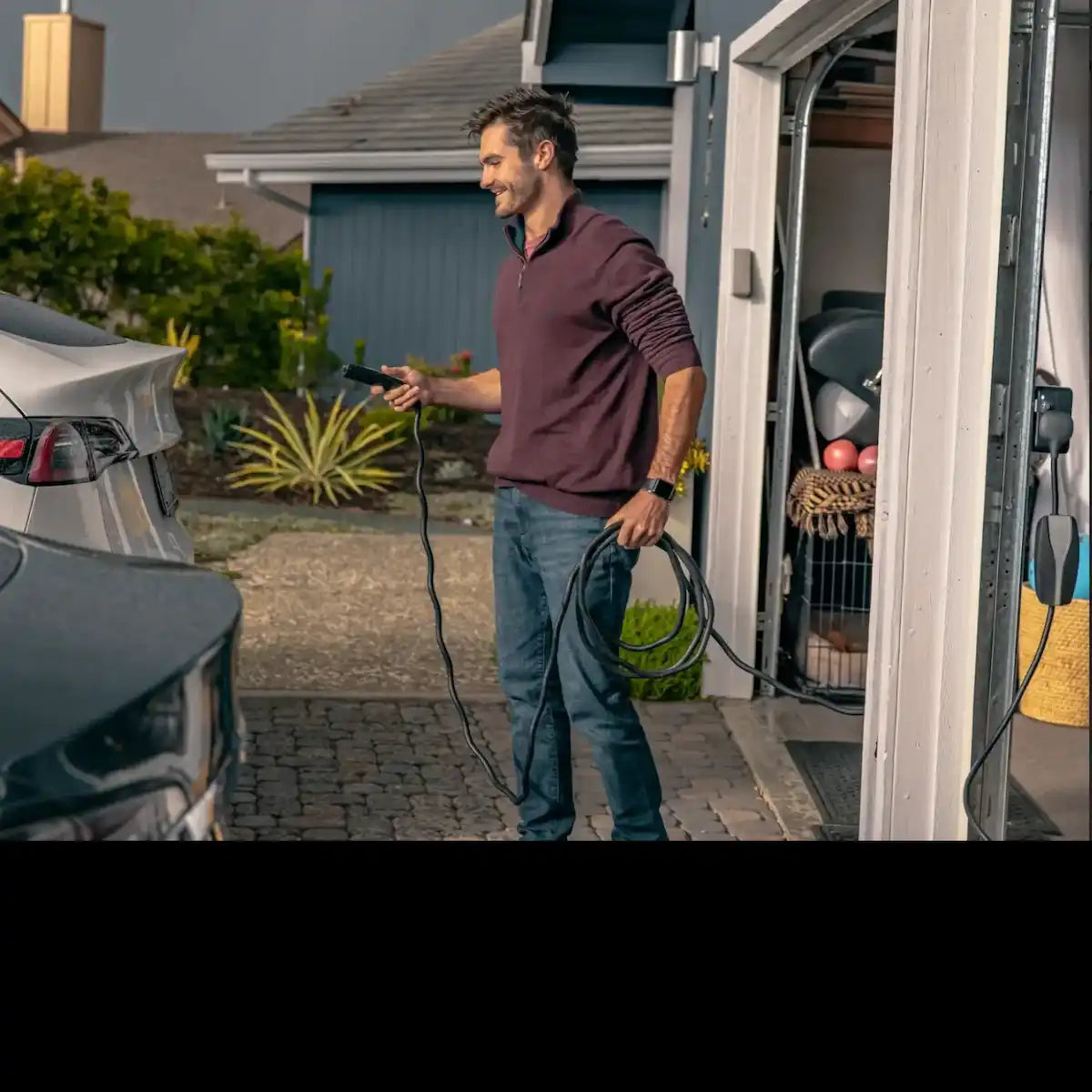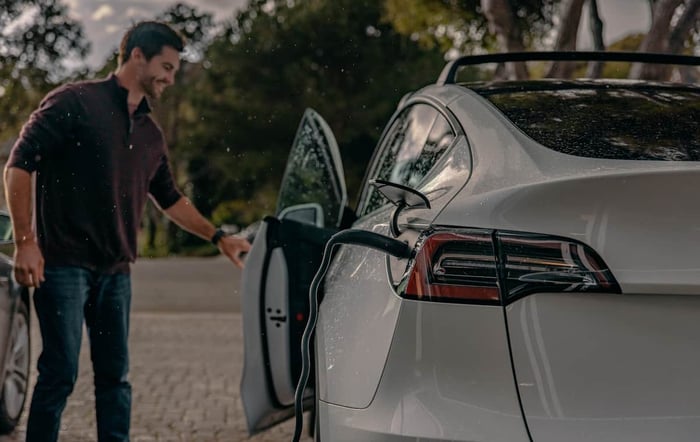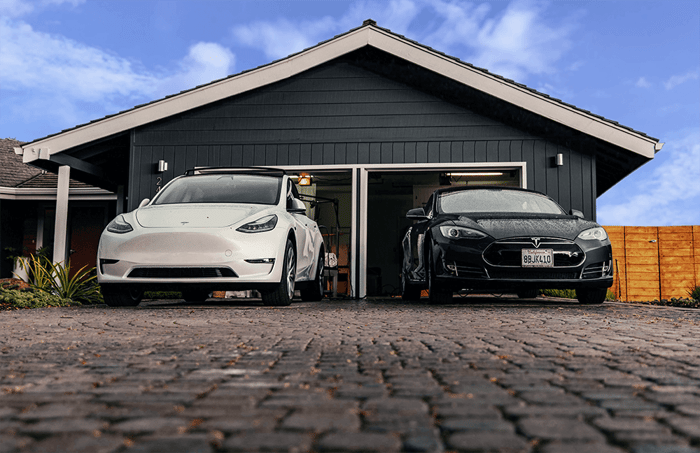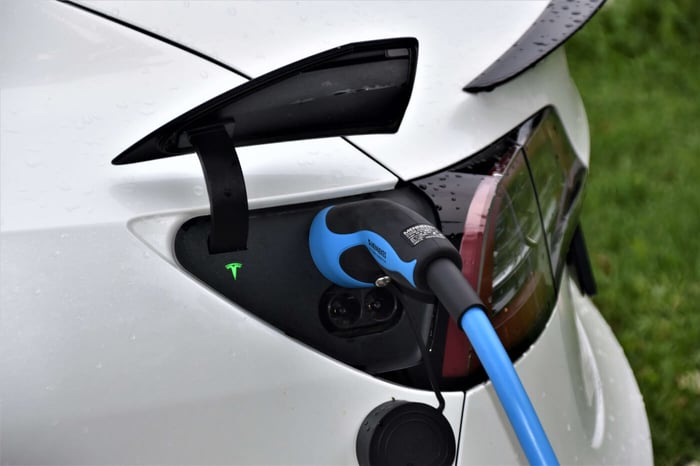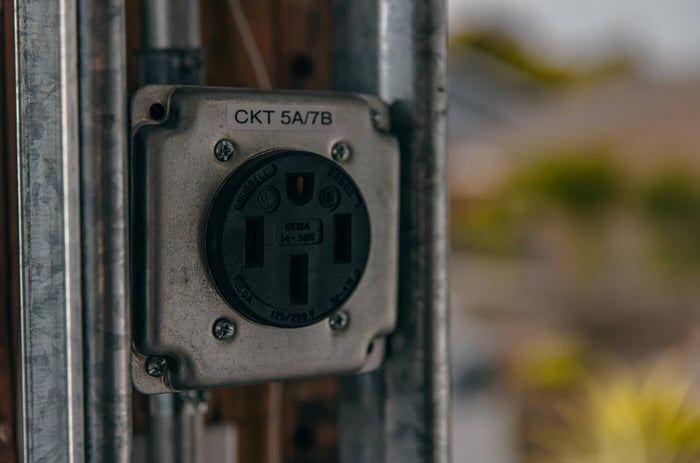If you’re reading this, you’ve probably already purchased an electric vehicle. Congratulations! You’re saving money, and saving the planet. Thank you for being an EV driver.
This article, then, won’t be focused on how electric vehicles save you money—we’re assuming you already know how expensive gas is. Instead, we’re going to focus on how EV products - more specifically, EV home charger installation products - can help you save.
The focus here will be on products that will lower your EV charger installation cost and help you avoid costly renovations to your home’s electrical system.
We’ll break down:
- How electric car charging at home works
- The products that will enable you to install and charge at home efficiently
- Why installing a car charger at home saves you money.
Let’s get started.
A quick cost comparison between public and home charging
This section will be more high-level but feel free to check out our in-depth cost comparison evaluating the difference between a home charging station installation vs. using a product like the NeoCharge Smart Splitter. The long story short is that EV products, like the Smart Splitter, are a reliable way to help you save on installation costs by using your existing 240V outlets. Especially when comparing this option to the traditional method of needing to upgrade your home electrical panel due to capacity constraints when installing a new 240 volt outlet.
When comparing home charging vs charging publicly there are a few tradeoffs. It's worth mentioning that charging your electric vehicle at a public charging station can sometimes be both inconvenient and expensive. Using a Level 3 charging station—which can charge your vehicle in about an hour - can cost you about $15. Still much cheaper than the cost of filling up your gas tank, doing the same at home will generally cost half the price—though it will take longer, as you’ll soon see.

This is, of course, assuming you can find a Level 3 charging station—and one that’s compatible with your EV. Level 2 public charging stations are also available and these are compatible with all EVs. They do, however, take around 8-12 hours, usually charging overnight, to fully charge your vehicle. For this reason, they’re sometimes called destination chargers - and you may still have to pay ≈$15 to fully charge your vehicle.
The $15 number we’ve been using is also a bit misleading. The price of electricity can fluctuate wildly depending on where you are, and what time of day it is. One of the advantages of home charging systems is you can opt to charge your vehicle during what utilities call Time-Of-Use rates, when the rate for electricity is at its lowest—usually in the middle of the night.
Okay, so we’re starting to see that charging at home can be viewed as less expensive than charging at a station, can charge your car overnight, and that using peripherals can help you reduce the cost of installing that home charging station.
But what are those peripherals? And why do they lower the cost of home charging stations so drastically? Let’s take a look!
Reduce cost to install 240 volt charger outlet with the NeoCharge 240V Smart Splitter
One of the biggest potential setbacks to home charging is not having the right outlet accessible to charge your car at home. In order for people to be able to plug in a Level 2 Charger you’ll need an available 240 volt outlet near where you'll charge your car.
240V outlets are commonly used by heavy duty household appliances like dryers and ovens—and it’s incredibly inconvenient to unplug your EV, plug in your appliance, then do the reverse every time you want to cook or clean.
Things get even trickier when you’ve got 2 electric vehicles—you would want two dedicated 240 volt outlets to power both vehicles.
Installing those outlets can be costly enough - and things get much worse (more expensive) when your entire home electrical system isn’t providing enough power. Most electrical panels, especially older homes, are rated at 100 amps, but if you’re using multiple appliances and charging your EV, you’ll need a 200 amp panel. To put it in perspective, a dedicated 240V outlet to plug in your electric car, NEMA 14-50, would take up 50 amps out of the 100 amp panel capacity in your home. That’s half of the capacity of your panel so people with a 100-125 amp panel are left with needing to upgrade these panels and likely cost upwards of $1,500+ in installation costs.
As you can imagine all of these upgrades get very costly, very quickly. While you’ll still save money compared to using a gas vehicle or public charging stations in the long run, there’s a better way.
The NeoCharge Smart Splitter allows you to plug in both an appliance and your EV charger, or 2 EV chargers into one outlet, without the need for a panel upgrade. Let's check out both use cases below.
NeoCharge Smart Splitter
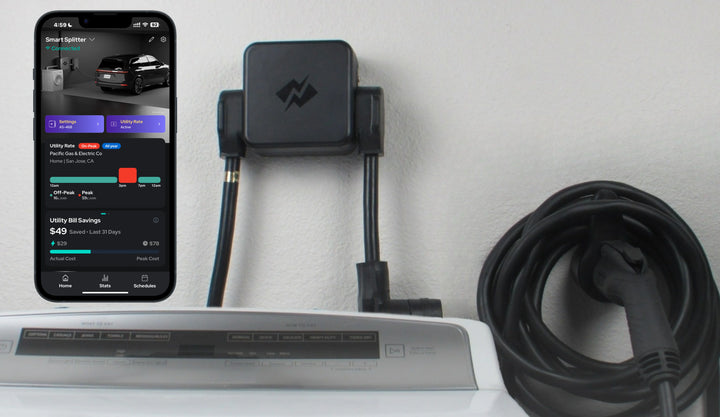
$399.00
The Smart Splitter plugs into your existing 240V outlet for easy circuit sharing between your appliance and EV OR two EVs. AVOID Expensive Panel Upgrades and Rewiring. SMART AUTO-SWITCHING, So You Don't Have To. UL Safety Certified. SELF Plug-In Installation. WiFi Enabled for Troubleshooting and… read more
Use case #1: Share your dryer outlet with your EV charger.
The setup is easy, you simply plug in the Smart Splitter, plug in your appliance, and plug in your EV charger. Via a proprietary switching algorithm, the Smart Splitter then prioritizes giving power to an appliance, like your dryer, so when you need to dry your clothes the device automatically pauses your car charging while the dryer is in use. When the dryer is done running, the Smart Splitter will automatically switch to continue to charge your electric car, all while never overloading your outlet.

Use case #2: Safely charge two electric cars using one 240V outlet.
The setup is the same as in use case #1 but instead of the appliance and EV charger, you would now be able to plug in two EV chargers. How this works is you charge your first car at full power, and once that’s done charging the splitter automatically pauses the first car and starts charging the second car. An additional feature is you can charge both cars simultaneously by simply changing the charge rate on the vehicles or the EVSE to half speed so their consumption equals the total amount the outlet is rated for and doesn't exceed the circuit’s capacity. Then you're able to charge both of your electric cars half the speed but at the same time.

As previously mentioned, the need to upgrade your electrical panel to 200 amps so you can install charging can cost you around $2,000+ alone vs. depending on the Smart Splitter you purchase, the cost of install can run between $399–$499.
Electric Vehicle Supply Equipment (EVSE)
Your EVSE is what allows you to use your home to charge your electric vehicle. There are 2 levels of EVSE available for home use - the Level 1 Charger (which uses 120 volts) and the Level 2 Charger (which uses 240 volts).
Level 1 Chargers can take 24+ hours to charge your vehicle - and that makes your electric vehicle obsolete for daily use depending on your commute. Level 2 Chargers, on the other hand, can charge your vehicle in 8-12 hours - which means you can charge your vehicle overnight. One of the main reasons why having a 240 volt outlet is more or less essential for owning an EV.
A Level 2 Charger is going to run you $300–$700, depending on the features that you want. If, for the sake of simplicity, you were to spend $20 a charge at a public station 2 times/week, versus $10 per charge at home.
There’s 52 weeks in the year, so you’d spend $1040 (52 x 2 x $10) charging at home, versus $2080 (52 x 2 x $20) charging at a station. That’s a $1040 dollar difference—a Level 2 Charger is very worthwhile.
It’s worth mentioning that your EV charger plug may look different from your outlet. If it does, you’ll need to buy an adapter—fortunately, adapters usually cost under $50.
Extension Cords
Now, not everyone has a 240 volt outlet near their garage or driveway. For those that don’t, extension cords could be the way to go.
Getting a UL-rated 240 volt extension cord is expensive, but it’s absolutely worth the price. A high-quality extension cord that’s long enough to run from your basement to your garage is likely to run you something in the range of $200. But even with that $200 cost, coupling an extension cord with the Smart Splitter is still far less expensive than upgrading your electrical panel. In some cases, it’s also less expensive than installing a new 240 volt outlet.
As you can see, buying the right peripherals can save you hundreds, if not thousands, of dollars. Take the time to evaluate your setup, figure out which EV products are right for you, and you’ll end up saving time and money.


